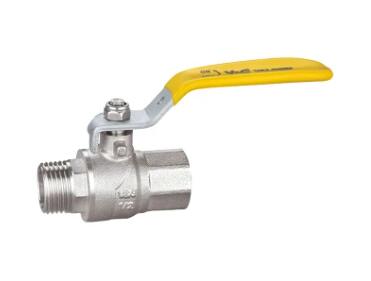Turning the Flow: A Guide to Classifying Ball Valves Based on Method of Operation
2024-01-30
Introduction:
In the intricate world of fluid control systems, ball valves play a pivotal role in regulating the flow of liquids and gases. These versatile devices come in various types, and their method of operation is a key factor in their classification. Understanding how ball valves are categorized based on their method of operation is essential for selecting the right valve for specific applications. In this blog, we'll explore the different classifications of ball valves, shedding light on the mechanisms that make them integral components of fluid management systems.
1. Manual Ball Valves:
The simplest and most straightforward among ball valves are the manual ones. Operated by a lever or handwheel, these valves allow users to control the flow by manually turning the valve handle. Manual ball valves are commonly used in applications where frequent adjustments are not necessary, and a simple on/off operation suffices. They are cost-effective, easy to install, and suitable for various industries.
2. Automated Ball Valves:
As technology advances, automation has become a significant player in industrial processes. Automated ball valves, also known as motorized or electric ball valves, are equipped with actuators that allow for remote or automatic operation. This type of ball valve is ideal for applications requiring precise control or automation, as they can be integrated into programmable logic controllers (PLCs) or other control systems. Automated ball valves are often employed in industries such as manufacturing, water treatment, and oil and gas.
3. Pneumatic Ball Valves:
Pneumatic ball valves utilize compressed air or gas to actuate the valve. These valves are suitable for applications where quick response times and high-speed operation are critical. Pneumatic actuators provide a reliable and efficient method of controlling the valve remotely. Industries such as chemical processing, pharmaceuticals, and water treatment frequently employ pneumatic ball valves.
4. Hydraulic Ball Valves:
Similar to pneumatic ball valves, hydraulic ball valves use fluid (usually oil) to actuate the valve. Hydraulic actuators provide a powerful and precise method of controlling the valve, making them suitable for heavy-duty applications. Hydraulic ball valves are often found in industries such as power generation, mining, and petrochemicals.
5. Thermal or Wax Motor Ball Valves:
In applications where temperature control is crucial, thermal or wax motor ball valves come into play. These valves use a thermal actuator that responds to temperature changes, allowing for automatic adjustments based on the thermal conditions of the fluid. Thermal ball valves are commonly used in heating, ventilation, and air conditioning (HVAC) systems.
Conclusion:
The classification of ball valves based on the method of operation reflects the diverse needs of industries when it comes to fluid control. Whether manually operated for simplicity, automated for precision, or actuated by pneumatic, hydraulic, or thermal mechanisms, each type serves a specific purpose in managing the flow of liquids and gases. As technology continues to advance, the role of ball valves in industrial processes will likely evolve, further enhancing efficiency and reliability in fluid control systems.



